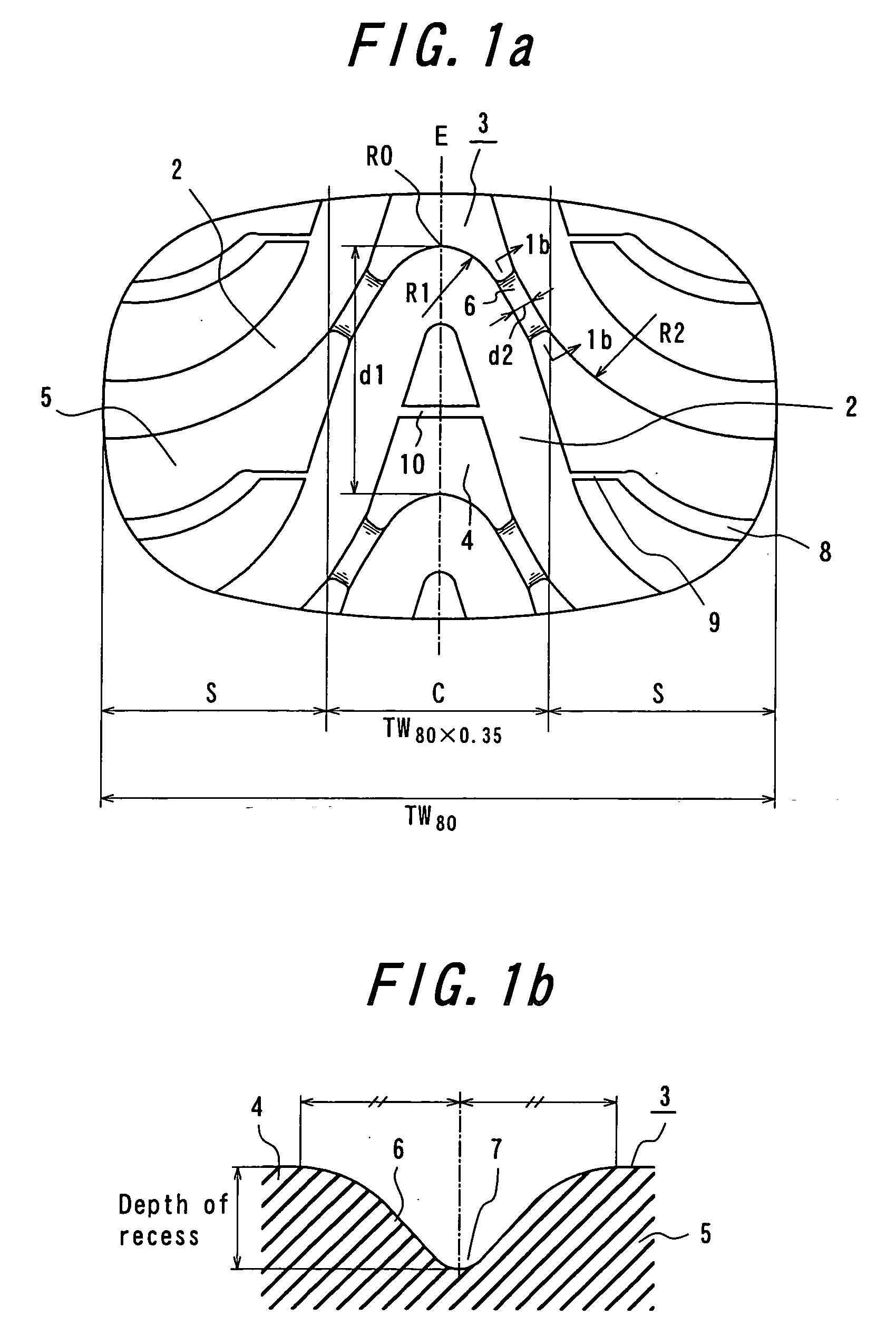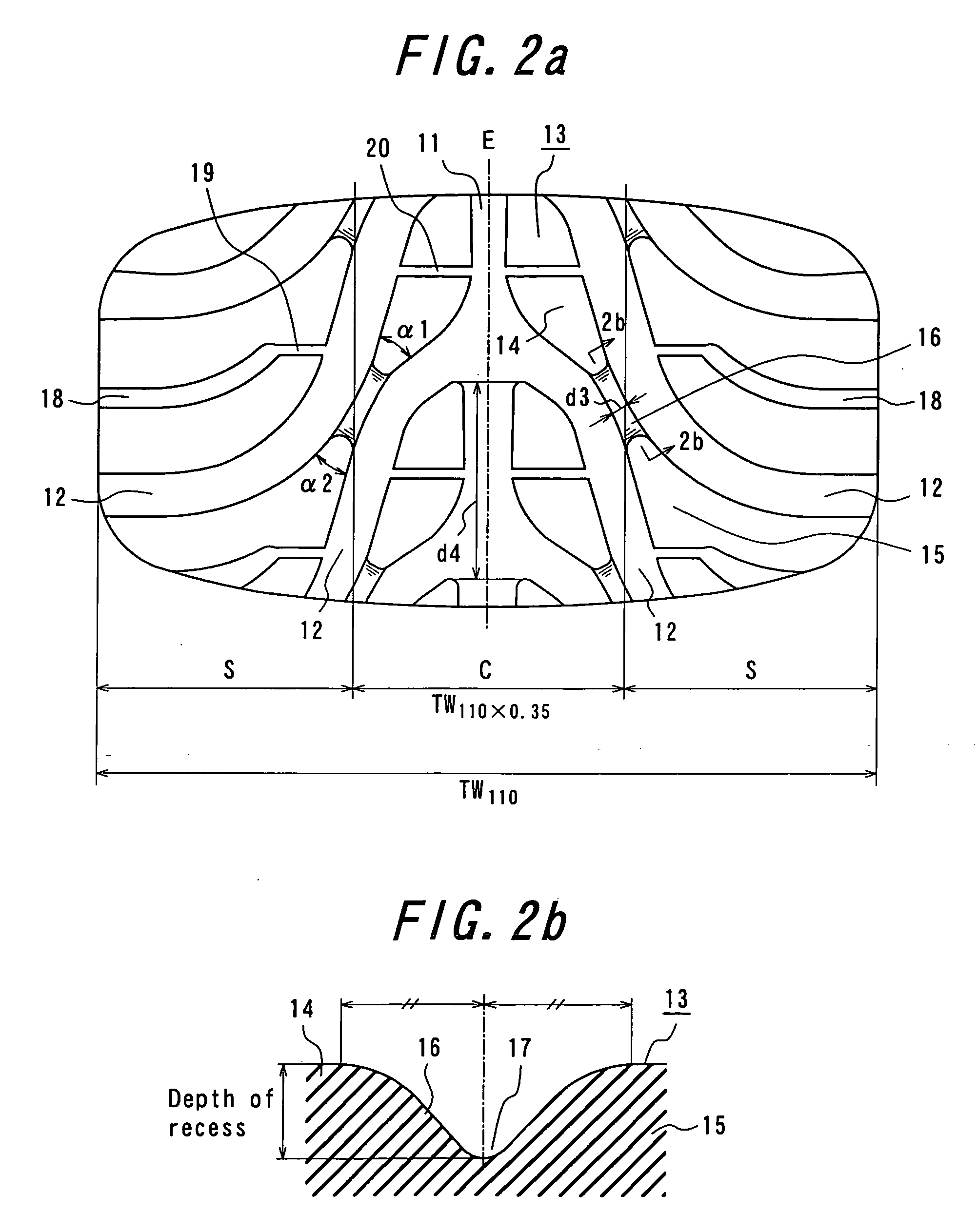Pneumatic tire
a technology of pneumatic tires and lateral slippage, which is applied in the direction of vehicle components, transportation and packaging, non-skid devices, etc., can solve the problems of remarkable performance deterioration, lateral slippage at the corner becomes large, performance deterioration, etc., and achieves stable steering stability and wear resistance. a large improvement
- Summary
- Abstract
- Description
- Claims
- Application Information
AI Technical Summary
Benefits of technology
Problems solved by technology
Method used
Image
Examples
Embodiment Construction
[0019] The invention will be described below with reference to the preferred embodiments shown in the accompanying drawings.
[0020] In FIG. 1a is shown a tread pattern of a pneumatic tire according to the first aspect of the invention. This tire has a central region C corresponding to TW80×35% and both shoulder regions S when TW80 is a ground contact width of a tread in the tire mounted on a rim of 4.5-5 inches under an internal pressure of 100 kPa and a load of 784 N.
[0021] In the first aspect of the invention, it is required that a wide-width main groove continuously extending in the circumferential direction of the tire is not arranged in the shoulder region S for reducing the wearing of the shoulder portion under a small water volume condition, and also a wide-width main groove continuously extending in the circumferential direction is not arranged in the central region, from which it is anticipated to lower the drainage property under a large water volume condition. In the inv...
PUM
 Login to View More
Login to View More Abstract
Description
Claims
Application Information
 Login to View More
Login to View More - R&D
- Intellectual Property
- Life Sciences
- Materials
- Tech Scout
- Unparalleled Data Quality
- Higher Quality Content
- 60% Fewer Hallucinations
Browse by: Latest US Patents, China's latest patents, Technical Efficacy Thesaurus, Application Domain, Technology Topic, Popular Technical Reports.
© 2025 PatSnap. All rights reserved.Legal|Privacy policy|Modern Slavery Act Transparency Statement|Sitemap|About US| Contact US: help@patsnap.com



